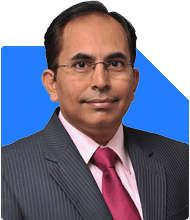I want to invest Rs ten lacs in various mutual fund for three or four years. Idea to increase the amount. can you please suggest that what type tund should I buy. thanls
Ans: First, let's understand your objectives. You want to invest Rs 10 lakhs in mutual funds for three to four years. The main goal is to grow this amount over the short to medium term.
Investment Horizon and Risk Appetite
Your investment horizon of three to four years is relatively short for equity investments. Typically, equity funds are recommended for longer horizons. But with careful planning, it's possible to target growth even in a shorter period. Given this, we need to balance your risk with potential returns.
Types of Mutual Funds Suitable for Your Goals
1. Hybrid Funds
Balanced Risk: Hybrid funds are a mix of equity and debt. They balance risk and return by investing in both stocks and bonds.
Potential for Growth: These funds offer growth potential with controlled risk, making them suitable for a three to four-year horizon.
Regular Income: Some hybrid funds also provide periodic income, which can be a bonus.
2. Large Cap Funds
Stability: Large-cap funds invest in well-established companies. These companies are more stable, making them a safer bet for short-term investments.
Moderate Returns: While the returns may not be as high as small or mid-cap funds, they are relatively stable.
3. Short-Term Debt Funds
Low Risk: These funds invest in short-term debt instruments like bonds and treasury bills. They are less volatile and offer steady returns.
Capital Preservation: While the growth potential is limited, these funds prioritize capital preservation, making them ideal if you want to avoid significant risk.
4. Dynamic Asset Allocation Funds
Flexibility: These funds dynamically adjust the allocation between equity and debt based on market conditions. This flexibility helps in capturing growth while managing risk.
Balanced Approach: They offer a balanced approach, especially when market conditions are uncertain.
Benefits of Actively Managed Funds Over Index Funds
Active Management: Actively managed funds have fund managers who make decisions based on market conditions, aiming to outperform the benchmark.
Potential for Higher Returns: Unlike index funds that mirror market performance, actively managed funds have the potential to generate higher returns through expert management.
Risk Management: Fund managers can make adjustments to protect your investment during market downturns.
Regular Plans vs Direct Plans
Expert Guidance: Investing through a Certified Financial Planner (CFP) with MFD credentials offers you expert guidance. This ensures your investments are aligned with your goals.
Better Performance: Regular plans often perform better due to active management and professional advice. Direct plans may save on costs, but the lack of guidance can impact returns.
Convenience: Regular plans simplify the process with ongoing support, making it easier for you to manage your investments.
Importance of Diversification
Risk Reduction: Diversifying your investment across different fund types reduces the risk. If one fund underperforms, others may compensate.
Optimized Returns: A well-diversified portfolio captures growth from various market segments, optimizing returns without taking on excessive risk.
Asset Allocation: It's crucial to allocate your Rs 10 lakhs across different fund categories, balancing equity with debt to achieve the best outcomes.
Tax Implications
Short-Term Capital Gains: If you sell equity funds before one year, gains are taxed at 15%. For debt funds, the short-term period is three years, and gains are added to your income and taxed at your slab rate.
Long-Term Capital Gains: Equity funds held for more than one year are taxed at 10% for gains above Rs 1 lakh. Debt funds held for more than three years are taxed at 20% with indexation benefits.
Tax Efficiency: Hybrid and dynamic asset allocation funds can be tax-efficient for your three to four-year horizon, especially if held slightly longer.
SIP vs Lump Sum Investment
SIP Advantage: Systematic Investment Plans (SIPs) spread your investment over time, reducing the risk of market volatility. It’s a disciplined approach but may not be ideal for a lump sum like Rs 10 lakhs.
Lump Sum Investment: Given your investment horizon, a lump sum investment in hybrid or large-cap funds might be more suitable. This way, your money is working from day one.
Monitoring and Rebalancing
Regular Monitoring: It's essential to monitor your investments regularly. Even though the horizon is short, market conditions can change, affecting your portfolio's performance.
Rebalancing: If one fund category outperforms or underperforms, rebalancing ensures your portfolio stays aligned with your goals. This involves shifting assets between equity and debt as needed.
Finally
Investing Rs 10 lakhs for three to four years requires a strategic approach. Hybrid, large-cap, short-term debt, and dynamic asset allocation funds offer a balanced mix of risk and return. Actively managed and regular plans provide the expert guidance needed to navigate market conditions, ensuring your investment stays on track.
Ensure diversification, be mindful of tax implications, and consider whether SIP or lump sum investments suit your needs. Regular monitoring and rebalancing will help you achieve your goals within the given timeframe. With this approach, you can aim for growth while managing risk effectively.
Best Regards,
K. Ramalingam, MBA, CFP,
Chief Financial Planner,
www.holisticinvestment.in



























